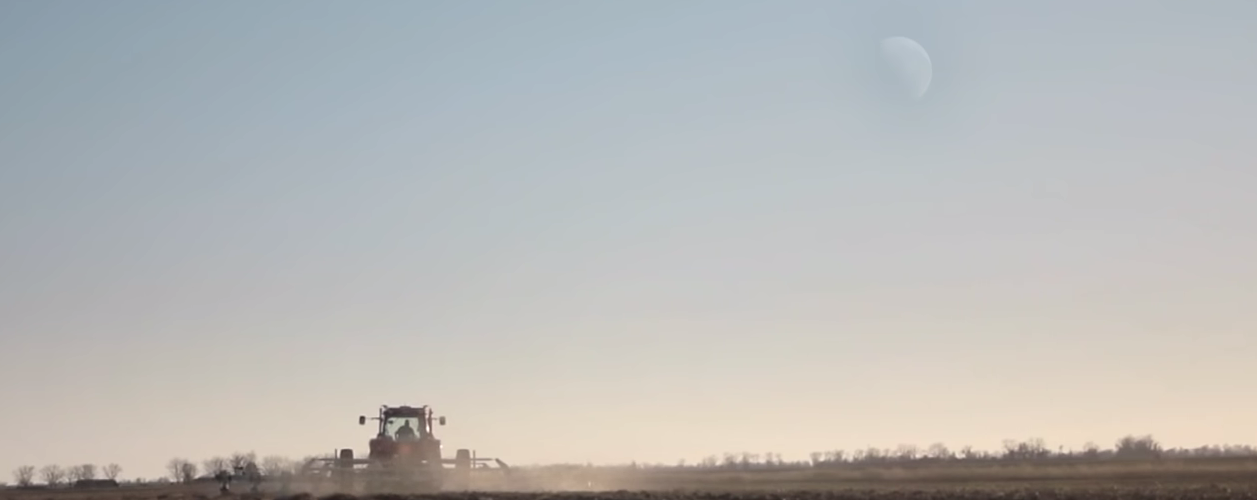Location. Location. Location.
When it comes to that glorious, $4.9 million Lilly Endowment Inc. grant that will fund 13 new religion journalists at The Associated Press, Religion News Service and The Conversation, exactly how much does location matter?
That’s the question some are asking after AP posted job ads for seven new positions last week, and RNS did the same this week for its three grant-funded openings.
A day after Lilly Endowment news, @AP posts job opening ads for seven religion journalists https://t.co/0rBaXMsKXw @ReligionReport
— Bobby Ross Jr. (@bobbyross) April 25, 2019
According to the ads, six of the seven AP positions will be based at AP headquarters in New York City or in Washington, D.C. The exception will be a Cairo-based newsperson who will cover Islamic faith and culture.
RNS, meanwhile, is hiring a managing editor to work in New York or Washington, along with a Rome-based Vatican correspondent and a Los Angeles-based national writer.
Sarah McCammon, an NPR national correspondent based in the Mid-Atlantic/Southeast U.S., grew up in a conservative Christian home in Kansas City and attended an evangelical college.
McCammon got more than 250 “likes” when she tweeted this suggestion to AP:
This is all truly great. My only feedback, @AP? Perhaps consider not basing your US religion reporters only in NY or DC. You have a huge network outside those hubs already. The faith beat could really benefit from eyes and ears elsewhere. https://t.co/RMepdqC4BQ
— Sarah McCammon (@sarahmccammon) April 25, 2019
Commenting on my most recent post about the Global Religion Journalism Initiative — as the collaborative effort is called — GetReligion’s own Julia Duin, who is based in Seattle, shared this related thought:
I hope they add at least one roving religion reporter (not based in the Acela zip codes) who will have the budget to do lengthy features. As for the other spots, I also hope they scatter them around the country, basing them in the Rocky Mountain, Pacific and Central time zones. Break free of Washington, DC and NYC.
Just recently, Terry Mattingly’s syndicated national religion column explored “Why it matters that many journalists struggle to grasp religion’s role in ‘Alienated America.’”
Really, you need to read the whole column.
But this section of what tmatt wrote, quoting Timothy P. Carney of The Washington Examiner, speaks to today’s topic:
Journalists didn’t see those connections, either, explained Carney, during a recent CNN Reliable Sources podcast, with Brian Stelter. Religious convictions among voters in some communities across America — in Iowa, in Utah and elsewhere — clearly had something to do with their rejection of Trump and support for other GOP candidates. These fault lines have not disappeared.
“That’s not something the national media know about,” said Carney. “Most of the national media don’t know that there’s a difference between the Reformed Church in America and the Christian Reformed Church and that there’s a difference between types of evangelicals and this was a central story to what happened in 2016.”
Stelter said the problem is that religion is “like climate change.” This topic affects life nationwide, but it’s hard for journalists to see since “there’s not a bill being introduced in Congress or there’s not a press conference happening in New York.”
This media-elite blindness skews political coverage, said Carney, but it affects other stories, as well – especially in thriving communities in flyover country between the East and West coasts.
“Far too many journalists know little or nothing about the subjects and issues that matter the most to religious believers in America,” he said. “It’s not just that they make egregious errors about religion. It’s that they don’t understand that there are religious angles to almost every big story and that, for millions of Americans, religion is at the heart of those stories.”
Meanwhile, I couldn’t help but notice a quote from Emma Green, the superb religion and politics writer for The Atlantic, in a recent Q&A she did with World magazine editor in chief Marvin Olasky at Patrick Henry College. If I can trust my memory from the last time I talked to her, Green is based in Washington.
Q-and-A with an outstanding journalist, Emma Green of The Atlantic – WORLD https://t.co/e7QwKFGaVs
— Marvin Olasky (@MarvinOlasky) May 1, 2019
Here is the relevant question that Olasky asked (in boldface type) and Green’s response (in regular type) that stood out to me:
The 2016 election results suggest that liberal national journalists were in a bubble. It’s true that in certain American newsrooms there is a liberal bias. There isn’t that much ideological diversity. It wasn’t unrealistic to believe that Hillary Clinton might be president, but the lesson for me there was that reporters should be immersed in different kinds of environments where people have different worldviews. One of the biggest liabilities for the media today is that mainstream news is so concentrated in New York, San Francisco, Los Angeles, and Washington, D.C., coastal urban areas that don’t capture a lot of what’s going on in the country.
So, to summarize: Some observers express concern that (1) journalists don’t get religion — which, come to think of it, might be a nice concept for a media criticism website — and (2) elite national journalists are too concentrated at the coasts.
Given that, have AP and RNS given any consideration to — as McCammon and Duin advised — basing some of the Lilly positions in the hinterlands?
Sarah Nordgren is AP’s New York-based deputy managing editor who oversees coverage of business, science and health, sports, entertainment and lifestyles. The new Global Religion team will fall under her authority. I always appreciated her support and encouragement during my time with AP in Nashville, Tenn., and Dallas from 2002 to 2005.
“For this round of the grant … the positions are all in New York and Washington, save one position in Cairo,” Nordgren noted in an email. “I’m hopeful that we will be able to expand dramatically geographically after 18 months at the time we renew, but that’s not the case until then.”
Bob Smietana, editor in chief of RNS, voiced a similar hope that the grant will be renewed and expanded after the initial phase, allowing more religion journalists to be hired in more locations.
“Our job in the next 18 months is to deliver great religion journalism and show that that there’s an audience for it,” Smietana told me, praising RNS CEO and Publisher Tom Gallagher for the “huge role” he played in getting the partnership launched.
Concerning the specific RNS openings:
• For a long time, RNS has relied on a part-time Vatican correspondent (although it doesn’t have one at this time), Smietana said. The new position will give a full-time presence to covering “the leadership of the third-largest human institution in the world,” with a billion-plus Catholics worldwide, he said. Only China and India have a higher population, he said.
• RNS seeks a Spanish-speaking national reporter, based in Los Angeles, with a focus on covering religious practices and experiences of Hispanic Americans. Both the West Coast and Latino people of faith are under-covered, Smietana said. West Coast religion, he said, is “probably covered less than Middle America.”
• The RNS managing editor, who will report to Smietana, will be based in New York or Washington, close to RNS’ new partners (AP and The Conversation). It’ll be important to have someone close as RNS is integrated into the AP wire process, Smietana said. Paul O’Donnell has served as RNS’ interim managing editor but will move into a senior editor position.
Hire more religion writers, says @emmaogreen and @mckaycoppins, and publishers will get a “renaissance of clicks.” https://t.co/rbLWqzWJc0
— Bob Smietana (@bobsmietana) May 15, 2017
Smietana stressed that RNS has “eyes and ears” beyond the coasts: National reporter Emily McFarlan Miller is based in Chicago (which allowed her to get to Nebraska quickly to cover the role of faith after recent historic flooding). National reporter and former managing editor Yonat Shimron is based in North Carolina. And Smietana himself lives in the Nashville area, one of a few cities nationally sometimes called the “Buckle of the Bible Belt.” RNS also has a network of freelance correspondents across the nation (for example, I often write stories from Oklahoma and Texas for RNS).
AP, meanwhile, has journalists in every state, just not religion beat specialists.
Among its postings, AP is looking for a New York-based text and digital presentation editor who “will direct and edit breaking news coverage, working closely with news managers and journalists worldwide to ensure AP content about religion is accurate, fast, distinctive and packaged creatively for audiences around the world.” To the extent that the person hired can help AP’s thousands of journalists around the world cover religion better, that’ll be a win in itself.
“We’re going to hire the best people,” Smietana said, predicting “great things ahead” for RNS, AP and The Conversation. “Readers are going to get more and better religion coverage.
“It’s going to be, as I like to say, wicked awesome.”











